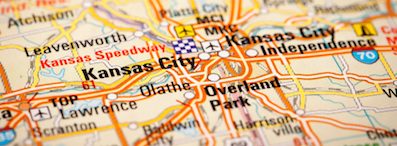This blog post is an excerpt from GovLoop’s recent guide Your Questions Answered: The Internet of Things in Government. Download the full guide here.
Bob Bennett views IoT as a means to better engagement with citizens.
“Deployment of technology makes the city maybe a cool city, but if you focus on people and data, that’s when you turn into a smart city … It’s all about making the city work more efficiently for citizens,” he said.
IoT provides cities an opportunity to keep up with changing citizen demands for connectivity. As technology becomes more and more prevalent in everyday life, citizens expect more connectivity throughout the city. Bennett acknowledged this, saying that keeping up with citizens is one of the biggest goals for cities now.
Kansas City has done a lot to keep up with its citizens. It has installed a two-and-a-half-mile streetcar line through the city’s downtown, with free public Wi-Fi covering 51 blocks surrounding the route, provided by a partnership with Sprint. Bennett offered an example of how this connectivity helped him: “I was able to walk out of my office one afternoon, start to download a presentation and by the time I walked about 16 blocks, it had downloaded. Never lost continuity the entire trip.”
Ten percent of that Wi-Fi bandwidth is dedicated to IoT devices, such as sensitivity light systems and people counters in the streetlights. The people counters can identity how many people are in a given area, allowing the adaptive light systems to dim the lights when there are no people nearby. Knowing how many people are in an area can also help the city prioritize services like police coverage or trash pickup. This data also provides insight into thinks like which areas have huge numbers of people but no restaurants.
The city has also installed 25 information kiosks connected to the public Wi-Fi. The kiosks provide information about where the streetcars are, allowing people to make more informed decisions about their travel plans. In addition, the kiosks offer restaurant reviews and recommendations, allowing people to make decisions about where to go communally. These kiosks had been accessed 14,000 times in the last month, said Bennett.
As one of seven finalists in the Smart City Challenge—which was recently won by Columbus, Ohio—Kansas City proposed a plan based on three pillars: transforming a proposed bus and rapid transit line in the eastern part of the city, building new autonomous vehicle corridors that would connect the eastern and western sides and establishing a series of community empowerment projects. The plan included implementing the same technology—the streetlights and sensors, free public Wi-Fi—that revitalized the downtown area in blighted neighborhoods in the east and creating an innovation center to catalog lessons learned so they could be shared with other cities.
With the growth of connected devices and cities, security concerns grow as well. Bennett explained how the city approached data privacy and security. Essential to security is the city’s partnership with Sprint.
“We have the benefit of having Sprint’s web security involved. And we’re the beneficiaries of their advances. Their R&D is significantly faster than a typical city procurement process,” he said.
The city will never see individual data from the public Wi-Fi, Bennett said. Rather, the city receives general, anonymized data about the general population in order to develop and adapt its strategies. This data is available on its open data site.
Bennett offered some advice for other governments beginning their smart city journeys. His first piece of advice is to “embrace the fact that cities can’t do this all by themselves.” Cities have to build and engage partnerships that transcend a single project. Cities are, however, obligated to respect citizens’ privacy.
Kansas City worked to achieve this by partnering with a local law school to establish a citizens’ bill of rights for data. Bennett emphasized, “You have to make sure you engage your citizenry to let them know what you’re doing and why you’re doing it.” His final piece of advice is to have a sense of humor and to “look at today’s failure as the impetus for tomorrow’s success because you’ve learned something along the way.”
In the future, Bennett imagines greater smart integration of the remaining departments, such as water and energy. There are advances happening, like a building that generates its own energy, that wouldn’t have been possible without smart technologies.
“I think that type of thing will grow as we get to the point where we’re being more efficient with the resources that we’ve been given,” Bennett said.
